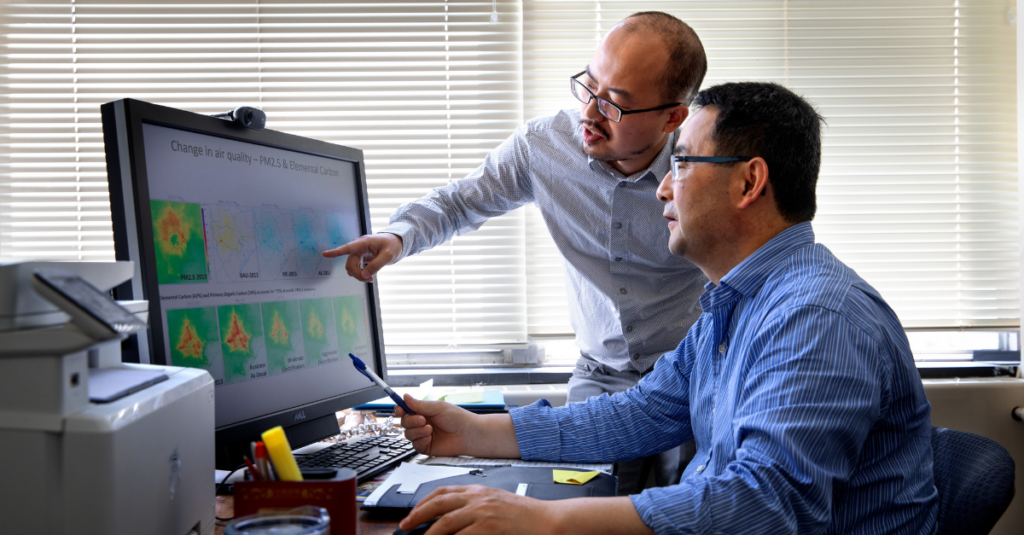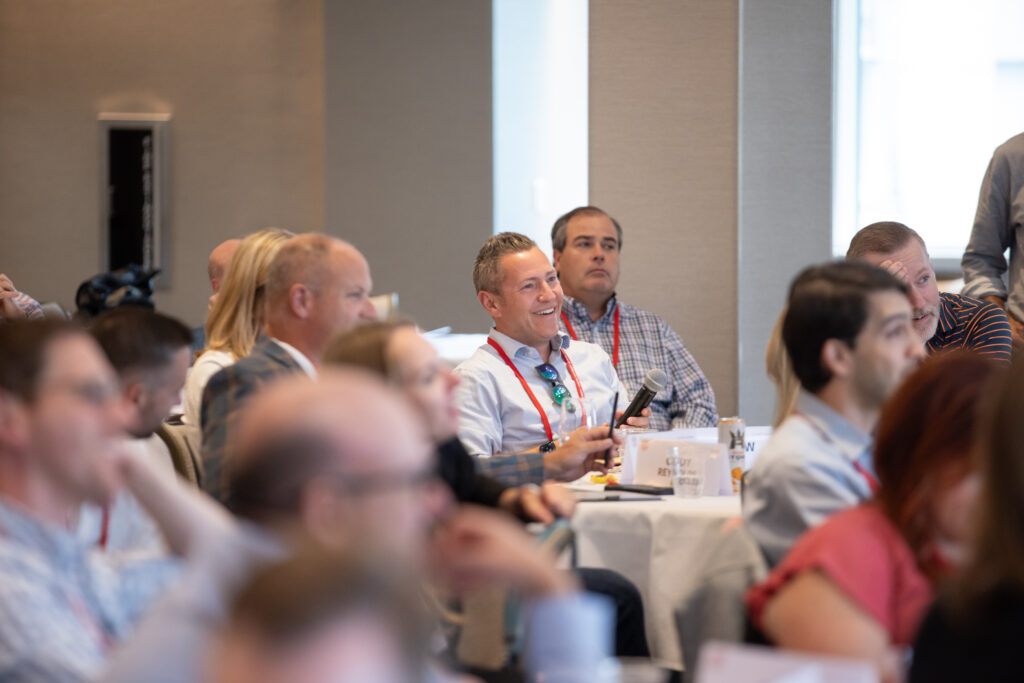3 ways sustainable businesses can prepare for climate challenges

From supply chain disruption to regulatory compliance pressure, companies experience bottom-line impacts of climate change every day. Accounting for environmental disruptions and transitions is essential to corporate risk management and resilience plans.
Sustainability and ecological transformation experts from Cornell University identified three strategies businesses can implement to thrive – and protect the planet – in a changing climate.
1. Limit the guesswork.
Forecasting climate change impacts on a company’s future requires a data-driven approach. Organizations can use current and projected temperature and weather trends to inform sustainability efforts. Leaders can also consult research and models from reputable sources such as the National Oceanographic and Atmospheric Agency and the Intergovernmental Panel on Climate Change to become better informed about the challenges – and opportunities – they may face. Research-based sustainable business practices enable companies to replace speculation with evidence-based predictions and solutions.
“Senior executives need to be fully aware of how climate change is shifting every assumption they may have about the future,” said Michael Hoffmann, former executive director of the Cornell Institute for Climate Change Solutions and professor emeritus in the College of Agriculture and Life Sciences. “Grasping how our world is fundamentally changing, and how to respond, is critical for their businesses as well as all of society.”
Corporations can expect more weather extremes that will cause delays, shortages and increased costs in the coming years. Hoffmann contends that it is critical to understand climate change’s bigger picture.
“Water scarcity, reduced crop yields, migration, heatwaves – we have witnessed the consequences of these issues on global business operations and consumers,” Hoffmann said. “Precedent should serve as a baseline for how businesses approach sustainability in the future.”
2. Avoid the copycat trap.
Given the uncertainty around best practices for a sustainable and regenerative future, corporate leaders might be tempted to duplicate the tactics of peers and competitors. Differences in operational size, industry, geography and customer base are important considerations in an organization’s efforts to reduce its effects on the climate and the climate’s effects on the organization.
According to Glen Dowell, the Henrietta Johnson Louis Professor of Management at the Johnson Graduate School of Management, there is no one-size-fits-all approach to climate change challenges for businesses.
“Fit your methods to at least two factors: what your company’s vulnerabilities and opportunities are, and the culture, structure and capabilities your company possesses,” Dowell said. “If your vulnerability stems largely from potential disruptions to a supply of a vital resource, you need to think both about how to secure a less vulnerable supply and possibly how to innovate to find a substitute.”
Dowell asserts that climate change reveals how interconnected our social and ecological systems are. The symbiosis is found in every company in every sector.
“For example, palm oil is sourced all too frequently by razing forests, leading to huge CO2 emissions and reducing the land’s ability to absorb CO2 in the future. If my company depended upon palm oil, I would be derelict in my duty to shareholders if I were not working tirelessly to secure a more sustainable source while simultaneously looking for a suitable replacement,” Dowell said. “For palm oil suppliers, developing a sustainable substitute would represent a significant business opportunity – a chance to gain massive sales to companies that need the product.”
3. Maintain a global and interconnected perspective.
Effective corporate sustainability initiatives involve employees from all business areas. Leaders can set policies and goals for emissions cuts, waste reduction and renewable energy investment, but success requires across-the-board adoption – especially in a time when consumers and investors increasingly expect companies to operate sustainably.
“The business case for sustainability is generally justified by increased profits, environmental benefits and a competitive advantage for early adopters,” said Danielle Eiseman, lecturer in the Brooks School of Public Policy. “However, as the effects of climate change become more widespread, the case for action becomes much more critical than what’s good for the bottom line.”
Eiseman encourages executives to assess the risks and consequences of climate challenges on their businesses through the lenses of individual and global impact.
“For informed decision-making, leaders need to comprehend the broader consequences like socio-economic implications and geopolitical shifts on a worldwide scale. Businesses operate within an ecosystem in which disruptions in one part of the world can have cascading effects throughout the supply chain and markets,” Eiseman said.
Learn how to seize the opportunities in sustainability.
Faculty from Cornell University have designed online certificate programs on a range of environmental, social and governance (ESG) topics, including sustainable business, corporate sustainability and equitable community change. A four-week Climate Change Leadership course from the Cornell College of Agriculture and Life Sciences is also available online through eCornell.
 Emerging economies, fueled by digital adoption, a growing middle class and urbanization, are full of unrealized growth potential. With potential risks and rewards fluctuating daily – and even hourly – investors and financial professionals must grasp the complexities to navigate volatile markets.
Emerging economies, fueled by digital adoption, a growing middle class and urbanization, are full of unrealized growth potential. With potential risks and rewards fluctuating daily – and even hourly – investors and financial professionals must grasp the complexities to navigate volatile markets. In the era of artificial intelligence (AI), professionals across sectors are racing to strategize ethical and sustainable applications of the technology. Many organizations are actively pursuing AI knowledge not only to harness its potential but also to ensure responsible implementation.
In the era of artificial intelligence (AI), professionals across sectors are racing to strategize ethical and sustainable applications of the technology. Many organizations are actively pursuing AI knowledge not only to harness its potential but also to ensure responsible implementation.




 Imagine unlocking the secret to success in both business and day-to-day life. It’s all rooted in one critical talent: strategic decision-making – the essence of exceptional leadership, the engine driving meaningful change, and the spark igniting innovation.
Imagine unlocking the secret to success in both business and day-to-day life. It’s all rooted in one critical talent: strategic decision-making – the essence of exceptional leadership, the engine driving meaningful change, and the spark igniting innovation.